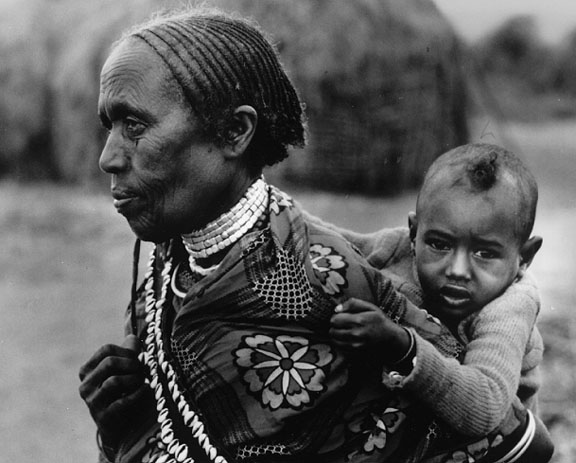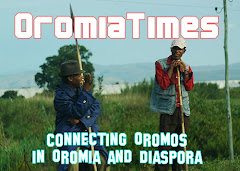Dadaab, Kenya: August 5 (Reuters) - Heavily pregnant and suffering head wounds inflicted by militiamen, Safia Abdullahi Musse trekked and hitched for two weeks from the Somali capital Mogadishu to reach a refugee camp in Kenya. "I arrived just in time before the baby came," said the 22-year-old, cradling her newborn daughter Nawal and pulling back a headscarf to show scars from a beating with sticks. "It was a hard journey. I was hungry, thirsty, very tired." Like thousands of refugees pouring into the Dadaab camps in north Kenya, Musse abandoned her homeland because of this year's fighting in south Somalia between Islamist militia and warlords. She lost track of other relatives and friends in the chaos of Mogadishu battles and then her journey south into Kenya. Now, while she seeks official refugee status giving her entitlement to U.N.-provided rations, she is living off charity. "The situation in Somalia is bad, I can't go back. I don't know where I will go. Who will help me and my baby?" she asks in a tatty corner of Dadaab where new arrivals like her have erected flimsy huts of sticks and plastic on sandy ground.
Since the turn of the year, an extra 18,000 Somalis have reached Dadaab, swelling to nearly 135,000 the population of a camp dating from the 1991 start of an era of anarchy in Somalia. Other Somalis have fled west into Ethiopia's Ogaden region or north to Djibouti. Numbers are just manageable at present. But aid workers fear that if a stand-off between the Islamists -- who won control of Mogadishu -- and the Ethiopian-backed interim government slides into full-scale war, the exodus could be massive. The U.N. refugee agency UNHCR is working on various scenarios. But Dadaab officer-in-charge Kevin Allen said staff were preparing for anything between 30,000 and 40,000 more arrivals in the next two months. "This is already one of the largest protracted refugee camps in the world," he said. "Dadaab is the sort of place certain segments of the international community have forgotten about." "LOST HOPE" Lying 63 miles (100 km) south of the Somali border in flat, barren land strewn with thorn-bushes, Dadaab is split into three sub-camps. U.N. staff retire to a compound behind barbed wire after dark because of the threat from bandits. Small and hungry groups from Somalia trickle in daily across the hot bush, with tales of violence and hardship behind them. "For the last three months, they have been coming in every day and night. Some on foot, some in trucks. Some have died on the way," said refugee camp leader Dahir Mohamed Ali, an ethnic Somali from Ogaden who has lived in camps for 22 years. "If there is real war again in Somalia, then God help us." New arrivals live in precarious circumstances, throwing clothes, cardboard and plastic bags over thin branches to keep off the sun at day and the cold at night. With Kenyan government policy requiring the Somalis to stay inside the camp, rather than go out and look for work or cultivate land, most people seem to rely entirely on handouts from the U.N. World Food Programme. Old-timers in Dadaab do, however, have relatively well-established shacks made from U.N-donated building materials, then supplemented by wood, mud and corrugated iron. There is even a busy market, with Internet and television services set up by Somali businessmen for those who can pay, normally with money from family members living abroad. Many children have known nothing but camp life since birth. The long-term residents watch sadly as more people come in. "Look at all these people arriving. Now I know there is no hope of going back," said mother-of-six Maryan Mohamed Yussuf, dragging a sack of maize past two beggars at a food centre.
Alertnet, Reuters
Since the turn of the year, an extra 18,000 Somalis have reached Dadaab, swelling to nearly 135,000 the population of a camp dating from the 1991 start of an era of anarchy in Somalia. Other Somalis have fled west into Ethiopia's Ogaden region or north to Djibouti. Numbers are just manageable at present. But aid workers fear that if a stand-off between the Islamists -- who won control of Mogadishu -- and the Ethiopian-backed interim government slides into full-scale war, the exodus could be massive. The U.N. refugee agency UNHCR is working on various scenarios. But Dadaab officer-in-charge Kevin Allen said staff were preparing for anything between 30,000 and 40,000 more arrivals in the next two months. "This is already one of the largest protracted refugee camps in the world," he said. "Dadaab is the sort of place certain segments of the international community have forgotten about." "LOST HOPE" Lying 63 miles (100 km) south of the Somali border in flat, barren land strewn with thorn-bushes, Dadaab is split into three sub-camps. U.N. staff retire to a compound behind barbed wire after dark because of the threat from bandits. Small and hungry groups from Somalia trickle in daily across the hot bush, with tales of violence and hardship behind them. "For the last three months, they have been coming in every day and night. Some on foot, some in trucks. Some have died on the way," said refugee camp leader Dahir Mohamed Ali, an ethnic Somali from Ogaden who has lived in camps for 22 years. "If there is real war again in Somalia, then God help us." New arrivals live in precarious circumstances, throwing clothes, cardboard and plastic bags over thin branches to keep off the sun at day and the cold at night. With Kenyan government policy requiring the Somalis to stay inside the camp, rather than go out and look for work or cultivate land, most people seem to rely entirely on handouts from the U.N. World Food Programme. Old-timers in Dadaab do, however, have relatively well-established shacks made from U.N-donated building materials, then supplemented by wood, mud and corrugated iron. There is even a busy market, with Internet and television services set up by Somali businessmen for those who can pay, normally with money from family members living abroad. Many children have known nothing but camp life since birth. The long-term residents watch sadly as more people come in. "Look at all these people arriving. Now I know there is no hope of going back," said mother-of-six Maryan Mohamed Yussuf, dragging a sack of maize past two beggars at a food centre.
Alertnet, Reuters

















No comments:
Post a Comment